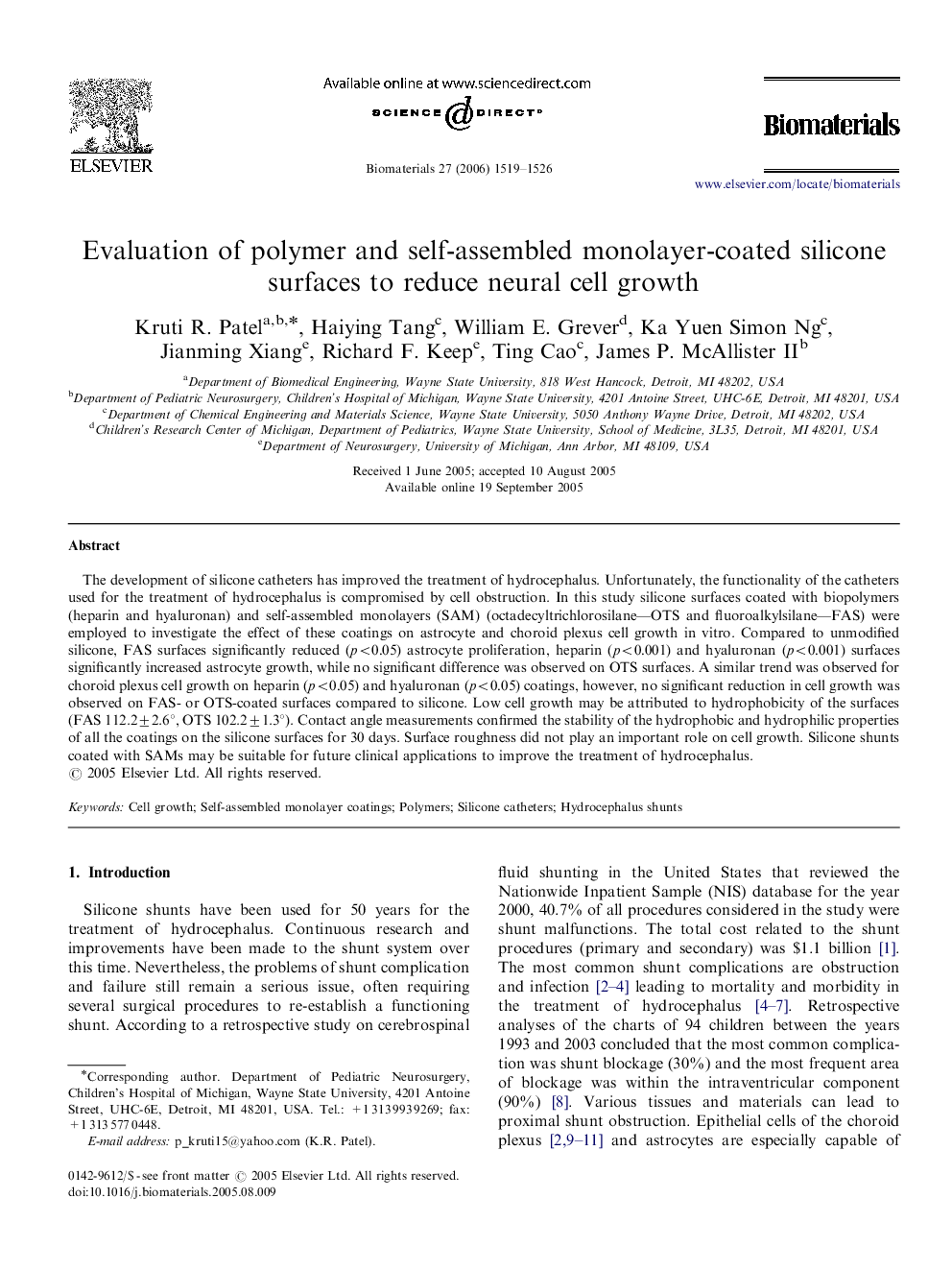| Article ID | Journal | Published Year | Pages | File Type |
|---|---|---|---|---|
| 11562 | Biomaterials | 2006 | 8 Pages |
The development of silicone catheters has improved the treatment of hydrocephalus. Unfortunately, the functionality of the catheters used for the treatment of hydrocephalus is compromised by cell obstruction. In this study silicone surfaces coated with biopolymers (heparin and hyaluronan) and self-assembled monolayers (SAM) (octadecyltrichlorosilane—OTS and fluoroalkylsilane—FAS) were employed to investigate the effect of these coatings on astrocyte and choroid plexus cell growth in vitro. Compared to unmodified silicone, FAS surfaces significantly reduced (p<0.05p<0.05) astrocyte proliferation, heparin (p<0.001p<0.001) and hyaluronan (p<0.001p<0.001) surfaces significantly increased astrocyte growth, while no significant difference was observed on OTS surfaces. A similar trend was observed for choroid plexus cell growth on heparin (p<0.05p<0.05) and hyaluronan (p<0.05p<0.05) coatings, however, no significant reduction in cell growth was observed on FAS- or OTS-coated surfaces compared to silicone. Low cell growth may be attributed to hydrophobicity of the surfaces (FAS 112.2±2.6°, OTS 102.2±1.3°). Contact angle measurements confirmed the stability of the hydrophobic and hydrophilic properties of all the coatings on the silicone surfaces for 30 days. Surface roughness did not play an important role on cell growth. Silicone shunts coated with SAMs may be suitable for future clinical applications to improve the treatment of hydrocephalus.
